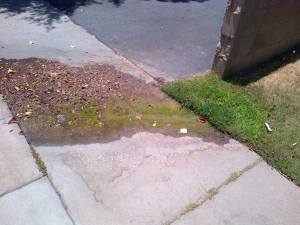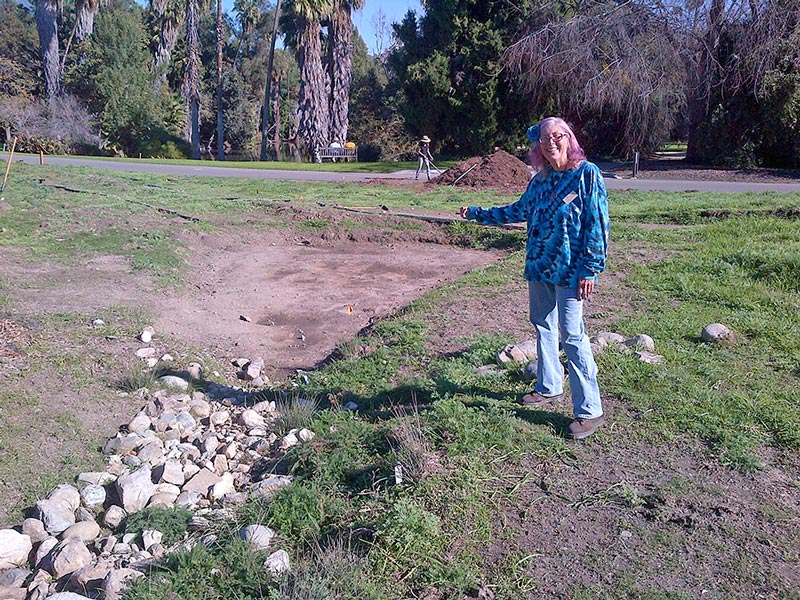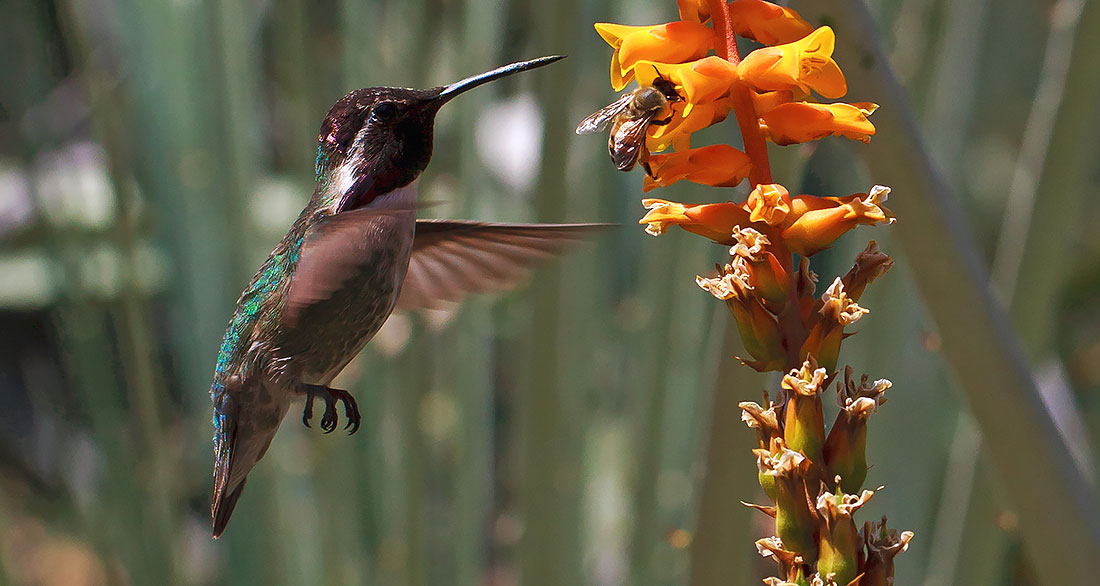PROTECTING WATER, WILDLIFE & POLLINATORS
Use Less Pesticides, Water and Fertilizer!
As a guiding principle, facilities managers should always be aware that simply reducing the amount of pesticides, fertilizers, and water used also reduces the likelihood that contaminants will be moved offsite into surface water. This Program contains general principles as well as policies and procedures crafted with the intent to reduce the use of pesticides, and other contaminants, that can cause impairment of surface waters.
Landscape choices-Less Turf and More Drought Tolerant Plants

A guide to planting drought tolerant gardens and landscaping developed by the Los Angeles County Department of Regional Planning. See Appendix D for information on how to get a copy.
Reducing the amount of irrigated turf is a recurring recommendation in this document for a variety of reasons. Among them is the fact that most turf choices require a lot of water. Compounding the problem is that turf is almost always watered by overhead sprinklers which are lined up along an impervious surface. A sheet of water running down a sidewalk as a result of a tweaked or broken sprinkler is not an uncommon sight in Southern California, unfortunately. Planting more drought tolerant plants will also reduce the overall need for water and therefore the potential for runoff. The Appendix section has a series of resources for drought tolerant plants to help with water-wise landscape decisions. Among them is an excellent and easy-to-use guide for how to plant small drought tolerant gardens developed by the Los Angeles County, Department of Regional Planning.
Manage Water Runoff
Where Will the Water Go?

This broken sprinkler is not doing its job, wastes precious water, and is helping to move any contaminants offsite and into surface water (Photo Credit Jim Hartman)
Look around before you apply a pesticide or fertilizer and try to imagine what will happen when it rains or when the sprinklers come on. In some cases, a potential pathway to surface water may become obvious and in other cases it may require a bit of imagination or even a three minute walk down a swale to see where it might end up. Remember, if it goes down a drain, it will almost certainly end up in a gutter, the storm drain system and eventually a river or ocean unless the drain has been purposely designed to empty into a landscaped area. If potential pathways to the storm drain system are identified, change the application timing, fix the broken sprinkler, modify the pathway, or do something else to prevent the materials from running off.
A World of Concrete and Asphalt (Facility and Landscape Design)

A person-made vernal pool at the L.A. County Arboretum designed to channel and save water runoff form a nearby paved access road.
In urban Los Angeles County, miles of interconnected impervious surface (concrete and asphalt roads, driveways, parking lots, etc.) serve as an efficient conduit of water runoff into the storm water management system. From there, most if not all of the water enters its final destination untreated which means anything it collected along the way goes with it. A facility can be designed to help reduce the amount of water runoff from both storm water and irrigation. Integrating the use of porous or pervious surfaces for driveways and walkways can allow water to soak into the ground. Examples of pervious surfaces include crushed stone and permeable interlocking pavers. In addition, walkways, driveways and other hard surfaces can be sloped so that water runs off into a landscaped area where it will be more likely to soak into the ground.
Sprinkler Patrol!
Automatic irrigation systems are extremely useful labor-saving devices. Every county department should be using Weather-Based Irrigation Controllers (WBICs). If non-WBICs are used for some reason, the settings must be frequently monitored throughout the year, especially during periods with wide fluctuations in weather. As the weather warms up in the late spring and early summer, the irrigation timing can be increased slowly with the understanding that a week of “low clouds and fog” will almost certainly require a reduction in timing or overwatering and accompanying runoff could occur. Facility managers and other responsible persons should be constantly alert for broken sprinklers and patrol the irrigated areas on an established schedule looking for signs of over or under watering.
Ground Water Protection
Using aerial imagery and data obtained from the California Department of Pesticide Regulation, ACWM relies on detailed maps and the California Pesticide Information Portal (CalPIP) – PRESCRIBE and GWPA, to show the exact location of every one of the designated Groundwater Protection Areas (GWPA) within Los Angeles County and if any endangered species might occupy that habitat.
Protection/Conservation of Pollinators
Many plant species depend on animals (domestic honey bees, native wild bees, butterflies, moths, wasps, beetles, birds and even bats in some areas) for pollination. In recent decades, several pollinating animals have suffered a decline for a variety of reasons including loss of habitat, pesticide misuse, diseases, parasites, and introduced invasive plant and animal species. The decline in population of pollinators may pose a serious threat to biodiversity, global food sources and to human welfare.
Most pesticides are not toxic to bees and other important insect pollinators, but many insecticides are. Bees can be killed directly as they are out foraging or they can return to the hive carrying with them insecticide-contaminated pollen which can contribute to chronic health effects in the colony. Following the principles outlined below will help reduce the impact of insecticides to Los Angeles County’s important insect pollinators:
- Before applying any pesticide, follow the Pre-application Checklist discussed in Section 8 which will help avoid unnecessary and ineffective pesticide use
- Read and carefully follow all environmental protection safety precautions on the pesticide label
- Watch for new EPA regulations that require some pesticide labels to have a PROTECTION OF POLLINATORS statement (Bee Advisory Box)
- Do not apply insecticides on or near plants when they are in bloom and bees are foraging
- Delay applying a systemic insecticide until after plants have flowered
The following are some ways bees and other insect pollinators can be helped or augmented:
- Cultivating plants that provide foraging habitat for collecting nectar and pollen
- Consider bees and other insect pollinators when designing landscaping by ensuring several bee-supporting plants will be in bloom throughout the year
- Convert turf areas into flowerbeds
- Controlling soil erosion will help protect native wild bees many of which nest in the ground
[2] California Code of Regulations, Division 6, Title 3, Chapter 4, Subchapter 1, Article 1, section 6800(a)
Featured photo credit: Edmund Williams


